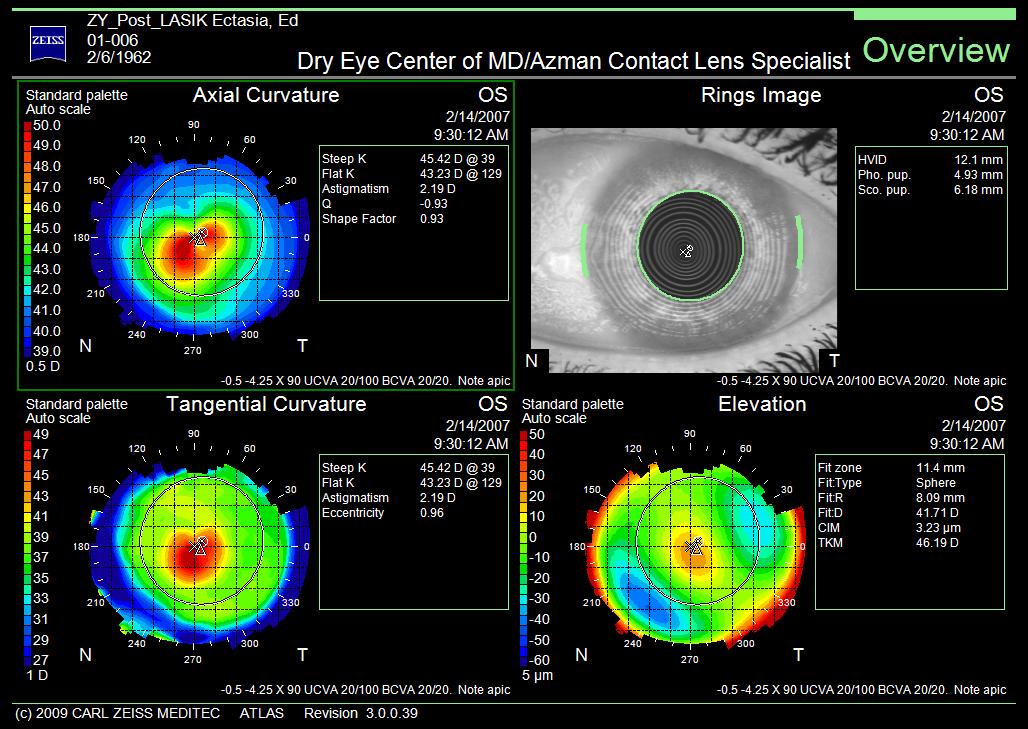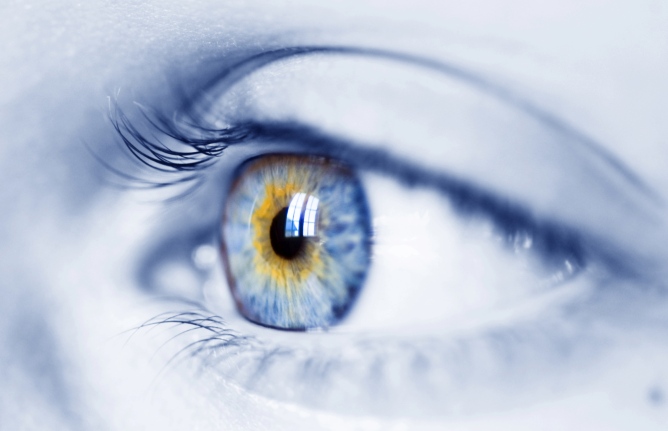High order aberrations (HOA) refer to complex imperfections of the optical system and are normally present in all eyes in minor unnoticeable amounts. However as a result of optical refractive surgeries such as LASIK, unnatural and irregular shape of the cornea can result in increase in HOA and thus result in halos, double vision, smears and other visual disturbances.
Measuring and Diagnosing High Order Aberrations
High order aberrations are measured using a wavefront aberrometer. The wavefront aberrometer measures the distortions of light as they pass through the patient’s cornea.
Wavefront aberrometry helps in diagnosing both lower order and higher order vision errors based on how the light passing through eye focuses or refracts.
High order vs. Low order aberrations
Lower order aberrations are common vision errors like nearsightedness, farsightedness and astigmatism.
Higher order aberrations are coma, spherical aberration and trefoil. These aberrations result in visual disturbances like glare, halos, starbursts, blurring, double vision, etc.
HOA after refractive surgeries like LASIK
As discussed above, HOA are present in normal un-operated eyes too, however usually they’re too low to be noticed or to cause any visual disturbances to the normal eye.
As a result of manipulation of the cornea or structures of eye involved in refraction of light entering the eye, the HOA are increased.
HOA in LASIK
In conventional LASIK surgeries, the HOA usually increase to an extent that they’re noticeable and cause visual disturbances especially at night when the pupils are dilated. This is due to the change and irregularity of corneal surface induced during the LASIK procedure.
HOA in wavefront-guided LASIK
Although wavefront-guided LASIK was introduced to reduce the total aberrations of the eye (both higher order and lower order) during the procedure, they still tend to result in increased HOA after the surgery, but reportedly less than conventional method.
The increase in HOA as a result of corneal manipulation in procedures like LASIK is one of the main reasons for visual disturbances like halos, glare, starbursts, double vision, blurring of vision, disturbed night vision, etc.
Treatment of increased HOA

Before and After Treatment of POST LASIK High Order Aberrations (HOA)
If the corneal surface is manipulated and significant increase in HOA has occurred to cause visual disturbances, contact Dr. Irwin Azman to discuss the condition in detail, to understand your issue and best options for your specific case. Options to solve the visual complications due to irregular corneal surface or other related option may include the following: rigid gas lenses (RGP), scleral contact lenses, soft contact lenses, hybrid lenses, and other options.
If you’re experiencing HOA disturbances (halos, glare, starbursts, double vision, blurring of vision, disturbed night vision, etc.) consult with Dr. Irwin Azman, Post LASIK HOA Specialist, for a complimentary telephone consultation.
Dr. Irwin Azman is one of the pioneers of the Post LASIK | PRK | RK patient. With over 25 years of experience in the management and treatment of the Post LASIK patient. Together with his knowledge and experience Dr. Azman is able to prescribe each patient with the proper solution in resolving their Post LASIK complications, including starburst, glare, dry eye, and other LASIK complications.
Serving the following areas since 1975:
MARYLAND: Annapolis, Baltimore, Bel Air, Bowie, Carney, Cockeysville, Crofton, Elkton, Essex, Fallston, Fredrick, Glenwood, Hampstead, Havre De Grace, Jarrettsville, Kingsville, Laurel, Lutherville, Manchester, Monkton, Parkton, Parkville, Phoenix, Pikesville, Randallstown, Reisterstown, Severn, Severna Park, Silver Spring, Sparks-Glencoe, Sparrows Point, Towson, Westminster, and Perry Hall
PENNSYLVANIA: Harrisburg, Hershey, Middleton, Shrewsbury, and York.
VIRGINIA: Alexandria, Fairfax, Tysons Corner, and Vienna WASHINGTION DC.





